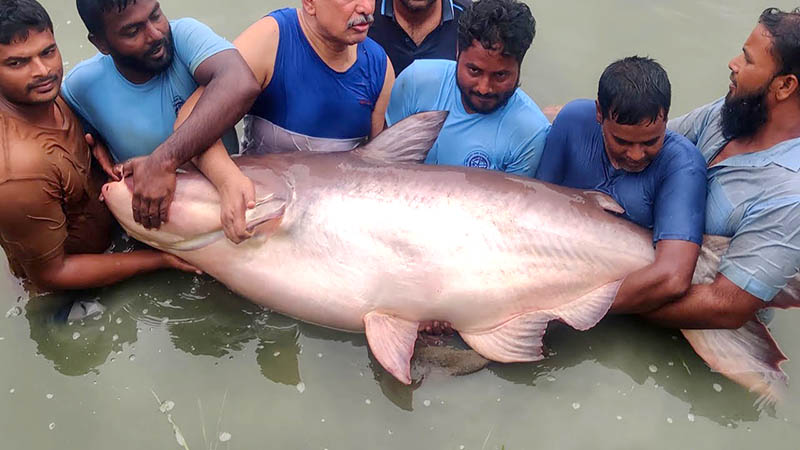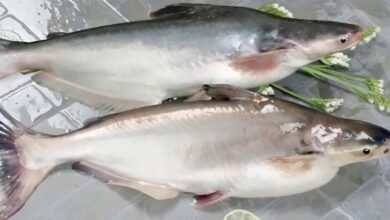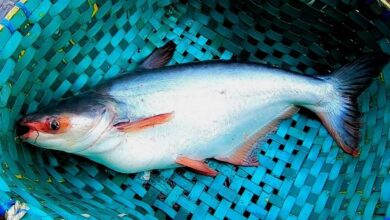
In a tranquil pond in Bangladesh, a beautiful sight unfolds – a giant Pangasius, weighing an astonishing 120 kilograms, gracefully glides through the water. This remarkable occurrence has captivated the attention of many, but it’s far more than just an awe-inspiring spectacle; it represents a groundbreaking moment in the world of fisheries research in Bangladesh.
This extraordinary Pangasius, often referred to as the “Giant Mekong Pangasius (Pangasius sanitwongsei)” is typically found in the Mekong River. Though this time, it has found its home in the pond of Bangladesh Fisheries Research Institute. This particular species is not only the world’s largest but is also critically endangered. Its arrival in Bangladesh in 2006 from Thailand marked the beginning of an incredible journey.
Dr. M. Khalilur Rahman, former Director-General of the Bangladesh Fisheries Research Institute, explains that the Mekong Giant Pangasius is native to the Mekong River. It has traveled from the Mekong, coursing through China, Laos, Cambodia, and Vietnam, before making its way to the Yellow Sea.
Initially raised in a Renny Fisheries in Trishal by Reza Ali, who brought it and later supplied 50 of these giant Mekong Pangasius to the Bangladesh Fisheries Research Institute (BFRI) in 2015, where it has become the subject of extensive research in pond environments. Researchers at BFRI have since been dedicated to studying their pond production.
Currently, the research center houses 47 Pangasius fish, age 17 years , with weights ranging from 100 to 150 kilograms. Research indicates that these fishes can lay 5-10 million eggs annually, spanning from the age of 17 to 40 years.
What makes the Mekong Giant Pangasius particularly fascinating is that despite its critically endangered status, it holds a place in the list of edible fish. This presents an opportunity for both the country and the global community to conserve and propagate this vital species. Researchers stress the importance of providing these fish with proper nutrition, maintaining optimal water quality, and adhering to a regulated daily feeding schedule.
Dr. Khalilur Rahman further explains that once these fish reach the breeding stage, they required food up to five percent of their body weight daily. Ensuring they receive a balanced diet, with a focus on protein-rich food, is crucial for their healthy growth. Additionally, it is essential to manage water quality to support their well-being.
If artificial breeding is successful, these fish can attain a remarkable weight gain of 9 to 12 kilograms within a year. This growth rate far surpasses that of native Pangasius fish in Bangladesh, increasing the promise of a sustainable aquaculture sector.
Rizvi Ahmed, a scientific officer at the Bangladesh Fisheries Research Institute, highlights that initially, these fish display carnivorous tendencies, but after a year, they transition to herbivores, sustaining themselves on submerged, floating, and shoreline periphyton or different algae. This adaptation suggests that, unlike other large fish species, the Mekong Giant Pangasius may not pose harm to the ecosystem.
The current Director General of BFRI, Dr Yahia Mahmud said, there are lot to be done to make this successful, we are currently trying to domesticate it and go for artificial breeding within next 3 to 4 years. Ongoing extensive research on this remarkable fish holds the potential to revolutionize the aquaculture sector in Bangladesh.
According to BFRI chief, currently the country is producing 4 million tons of Pangasius, the addition of fingerlings from this unique species could signal a new era of prosperity in the sector.




